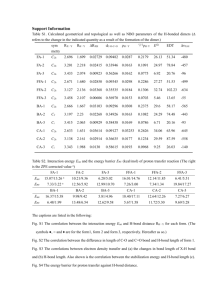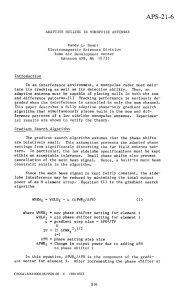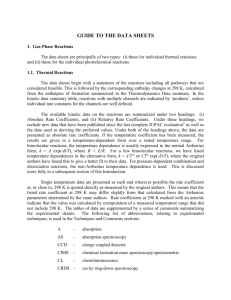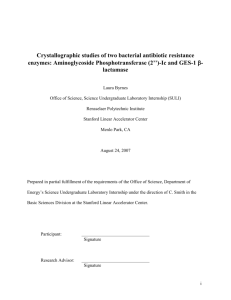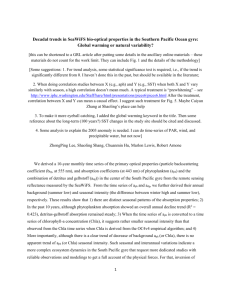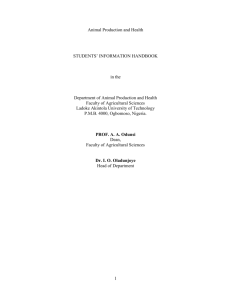POC algorithm paper
advertisement
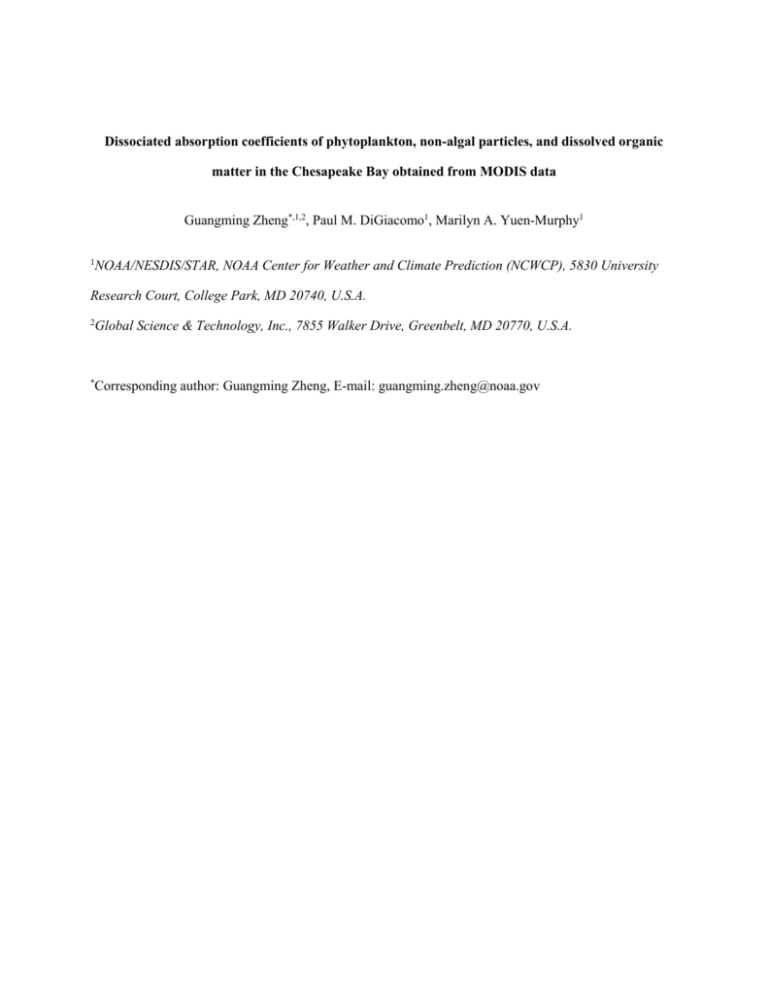
Dissociated absorption coefficients of phytoplankton, non-algal particles, and dissolved organic matter in the Chesapeake Bay obtained from MODIS data Guangming Zheng*,1,2, Paul M. DiGiacomo1, Marilyn A. Yuen-Murphy1 1 NOAA/NESDIS/STAR, NOAA Center for Weather and Climate Prediction (NCWCP), 5830 University Research Court, College Park, MD 20740, U.S.A. 2 Global Science & Technology, Inc., 7855 Walker Drive, Greenbelt, MD 20770, U.S.A. * Corresponding author: Guangming Zheng, E-mail: guangming.zheng@noaa.gov Abstract The light absorption coefficients of phytoplankton, aph(), nonalgal particles, ad(), and colored dissolved organic matter (CDOM), ag(), are essential biogeochemical parameters and water quality indicators in coastal and inland waters, where the spectral shapes of these coefficients can be highly variable and neither ad() nor ag() necessarily covary with aph(). Previous studies attempting to quantify these coefficients rely on algorithms that inadequately or fail to address these absorption complexities and sometimes entail inter-dependence among derived variables. Here we present these coefficients in the Chesapeake Bay derived using a two-step approach from satellite. First, we inverted MODIS reflectance data to derive the total non-water absorption, anw(), and total particulate backscattering, bbp(), coefficients with the Quasi-Analytical Algorithm (QAA). Next, we partitioned the QAA-derived anw() into aph(), ad(), and ag() using the Generalized Stacked-Constraints Model (GSCM) which accounts for absorption complexities in typical Chesapeake Bay waters. Mathematically dissociated absorption components were achieved with our approach. The degree of correlation among aph(), ad(), and ag() varies with both time and location, which appear reasonable considering the diversity of factors affecting each coefficient. We also note that among the satellite-derived variables bbp() correlates best with ad() while least with aph(), consistent with field observations reported for this region. While the validity of our results requires further evaluation using field data, it is the first time that independent information about these water constituents was effectively extracted from satellite data, a capability crucial to conducting biogeochemical research and water quality management in coastal and inland waters. 2


